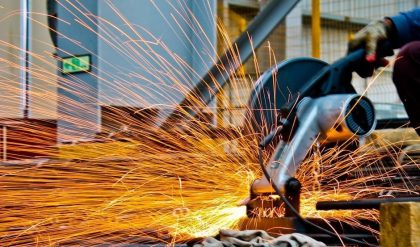Manual Compactor: A Comprehensive Guide
Manual compactors are essential tools for various small-scale projects where larger machinery is not feasible. This guide provides a comprehensive overview of manual compactors, covering their types, applications, advantages, disadvantages, and safety considerations.
Manual compactors are hand-operated tools used to compress soil, gravel, asphalt, and other materials. Ideal for small-scale projects and confined spaces, they offer a cost-effective and portable compaction solution. Unlike electric or vibratory compactors, manual compactors rely on physical force to achieve compaction. They are commonly used in construction, landscaping, and DIY projects. Understanding the types, advantages, and disadvantages of manual compactors is crucial for selecting the right tool for your needs. This guide will provide a detailed overview to help you make an informed decision and ensure safe and effective operation.
Types of Manual Compactors
Manual compactors come in various types, each suited for specific applications. Common types include plate compactors, rammer compactors, and hand tampers. Each type offers different compaction capabilities and is ideal for diverse soil conditions.
Plate Compactors
Plate compactors are a common type of manual compactor used in construction. They consist of a heavy, flat plate that vibrates to compact soil, gravel, and asphalt. These compactors are effective for surface compaction and are suitable for both granular and mixed soils. They are often used for preparing foundations, pathways, and other small-scale projects.
While plate compactors are effective for surface compaction, they may lack the depth capabilities of rammers. They should be used in combination with other equipment when deeper compaction is necessary. Their simplicity and ease of use make them a popular choice.
Rammer Compactors
Rammer compactors, also known as trench rammers, are another type of manual compactor. They are designed to deliver a powerful impact force to compact cohesive soils in narrow or confined areas. These compactors are ideal for compacting trenches where utilities like water and gas lines are laid.
Rammer compactors provide deep compaction and are highly effective on cohesive soils. However, they may leave a rough surface finish and are slower compared to other compactors. Their high compaction force makes them suitable for challenging soil conditions. They can be heavier and more physically demanding to operate.
Hand Tampers
Hand tampers are the simplest type of manual compactor, consisting of a heavy, flat plate attached to a handle. They are used for compacting soil, gravel, and asphalt in small areas or where access is limited. Hand tampers are ideal for spot repairs and finishing work.
While hand tampers have their advantages, they also have some inherent disadvantages. Manually operating a hand tamper requires significant physical effort, making it labor-intensive. They are less effective than other compactors for larger areas or deeper compaction needs. Hand tampers are best suited for small-scale projects and tight spaces.

Advantages of Manual Compactors
Manual compactors offer several key advantages, including affordability, simplicity, portability, and environmental friendliness. They are a cost-effective solution for small-scale compaction needs, requiring minimal maintenance and no external power source.
Affordability
One of the most significant advantages of manual compactors is their affordability. Compared to electric or vibratory models, manual compactors generally have a lower initial purchase price. This makes them an accessible option for individuals, small businesses, or projects with limited budgets. The absence of complex mechanical or electrical components also contributes to their lower overall cost. Furthermore, the reduced risk of breakdowns and the need for costly repairs makes manual compactors a popular choice for people looking for a cost-effective tool. Choosing manual compactors allows for easier entry into the waste management industry.
Simplicity and Ease of Maintenance
Manual compactors stand out due to their straightforward design and ease of use. Operating a manual compactor requires minimal training, making it accessible to a wide range of users. Their simple mechanical nature translates to easy maintenance and reduced chances of breakdowns. Since they lack complex electrical or hydraulic systems, repairs are typically less frequent and less costly. Regular cleaning and basic lubrication are usually sufficient to keep a manual compactor in good working order. The simplicity reduces the risk of breakdowns and the need for costly repairs. This makes them a great choice for homeowners.
Portability
One of the key advantages of manual compactors is their exceptional portability. These tools are typically smaller and lighter compared to their electric or vibratory counterparts. This makes them incredibly easy to move around job sites, transport in vehicles, and store when not in use. The compact size and lighter weight allow for effortless maneuverability in tight or confined spaces where larger machines cannot reach. This portability proves especially valuable for projects that require frequent relocation or work in areas with limited access. Manual compactors are the best choice for small projects.
Environmental Friendliness
Manual compactors offer a significant environmental advantage due to their lack of reliance on electricity or fuel. Unlike electric or gasoline-powered compactors, manual compactors do not produce any emissions during operation. This makes them a more sustainable and eco-friendly choice for compaction tasks. By eliminating the need for fossil fuels or electricity, manual compactors contribute to reducing carbon footprints and minimizing environmental impact. This aspect is especially appealing to environmentally conscious contractors and individuals seeking to minimize their ecological footprint on construction sites and other projects. Using manual resources is a sign of caring for the planet.

Disadvantages of Manual Compactors
Manual compactors require significant physical effort, limiting their use for large-scale projects. They also offer limited compaction power compared to motorized options, making them less effective for dense materials and extensive areas.
Physical Effort Required
Operating manual compactors demands considerable physical exertion from the user. Unlike their electric counterparts, manual compactors rely entirely on human strength to compress materials. This can lead to operator fatigue, especially during extended use or when dealing with large volumes of material. The repetitive motions involved can also increase the risk of strains and injuries. The physical demands limit the practicality of manual compactors for large-scale projects or in situations where consistent compaction is required over extended periods. Therefore, it’s vital to consider the operator’s physical capacity when choosing a manual compactor for a job. Proper technique and rest are also important.
Limited Compaction Power
Manual compactors, while useful for smaller tasks, offer limited compaction power compared to motorized options. Their effectiveness is directly tied to the operator’s strength and the design of the tool. Achieving deep and consistent compaction, particularly with dense materials, can be challenging. The force applied is often insufficient for projects requiring high levels of soil density or dealing with cohesive soils. This limitation makes manual compactors less suitable for applications where structural integrity is paramount. While practical for patching or small repairs, their limited compaction power necessitates considering alternative equipment for more demanding projects. Their use is then limited to confined spaces.

Applications of Manual Compactors
Manual compactors are ideal for small-scale projects where larger machines are impractical. They excel in confined spaces and are commonly used for patching asphalt, compacting trenches, and preparing small areas for landscaping or paving projects.
Small-Scale Projects
Manual compactors prove invaluable in various small-scale endeavors where the use of larger compaction equipment is either impractical or unnecessary. Landscaping projects, for instance, often benefit from manual compactors for leveling soil or compacting gravel pathways. Similarly, homeowners find them useful for tasks like patio repairs or creating small garden beds; These compactors are also suitable for compacting soil around fence posts or small retaining walls. Their maneuverability and ease of use make them a practical choice for DIY enthusiasts and professionals tackling smaller jobs with precision and efficiency, without the need for heavy machinery.
Confined Spaces
Manual compactors are particularly well-suited for working in confined spaces where larger machinery cannot operate effectively. These areas include trenches, narrow pathways, and around foundations where accessibility is limited. The compact size and maneuverability of manual compactors allow operators to compact soil or other materials with precision in tight spots. This makes them ideal for utility work, such as compacting backfill around pipes or cables in trenches. Additionally, they are useful for compacting soil in small construction sites or landscaping projects where space is restricted, ensuring thorough compaction even in challenging environments.
Comparison with Other Compactor Types
Manual compactors differ significantly from electric and vibratory plate compactors. This section explores these differences, highlighting the trade-offs between power, portability, cost, and ease of use to help determine the best option.
Manual vs. Electric Compactors
Manual compactors rely on physical force, making them affordable and portable but requiring more effort. Electric compactors, conversely, offer high compaction power and efficiency with minimal physical exertion. However, electric models have a higher initial cost and need a power source. Manual compactors are simple to maintain, while electric ones may require more complex repairs. The choice depends on project scale, budget, and access to electricity. Consider the trade-offs between physical demand, power, cost, and environmental impact to determine the most suitable option for your specific needs.
Manual vs. Vibratory Plate Compactors
Manual compactors, such as hand tampers, require direct physical force for compaction, suitable for small, confined areas. Vibratory plate compactors, powered by engines, use vibration to efficiently compact granular soils and asphalt. Manual compactors are cost-effective and simple to operate, but demand significant physical effort. Vibratory plates offer greater compaction force and speed, covering larger areas more quickly. However, they are more expensive and less portable. The choice depends on project size, soil type, budget, and the level of compaction required. Vibratory plates are better for larger jobs needing consistent compaction.
Safety Considerations When Using Manual Compactors
When operating manual compactors, prioritize safety to prevent injuries. Always wear appropriate personal protective equipment (PPE), including safety glasses, gloves, and sturdy footwear, to protect against flying debris and hand injuries. Maintain a firm grip on the compactor handle and use proper lifting techniques to avoid back strains. Clear the work area of obstructions and ensure adequate lighting. Be aware of your surroundings and maintain a safe distance from others. Take frequent breaks to prevent fatigue, which can compromise safety. Inspect the compactor before each use for any damage or loose parts. Follow manufacturer’s instructions and guidelines for safe operation.

Maintenance of Manual Compactors
Proper maintenance ensures the longevity and optimal performance of manual compactors. Regularly inspect the compactor for any signs of wear, damage, or loose parts. Clean the equipment after each use to remove dirt, debris, and asphalt buildup. Lubricate moving parts, such as hinges and joints, according to the manufacturer’s recommendations. Check the compaction plate or rammer foot for wear and replace it if necessary. Store the compactor in a dry and protected area to prevent rust and corrosion. Tighten any loose bolts or fasteners. If you notice any significant issues, consult a qualified technician for repairs.





